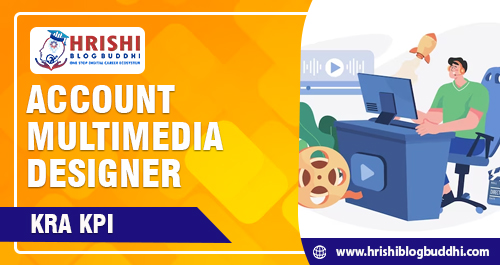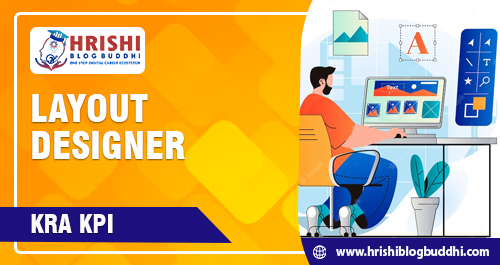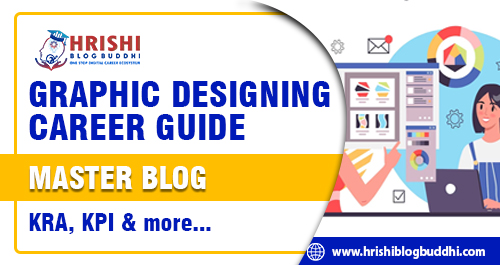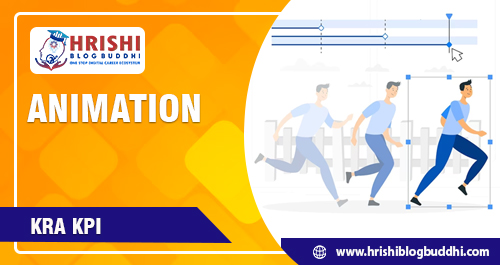JOB DESCRIPTION AND RESPONSIBILITY
KEY RESULT AREA(KRA) & KEY PERFORMANCE INDICATOR(KPI)
GRAPHIC DESIGNER
ART Director Comprehensive Guide
Share this post

Introduction
An art director is a professional who is responsible for overseeing the visual aspects of a creative project, whether it be in print, digital media, film, television, or other forms of visual communication. They are responsible for managing the overall look and feel of a project, and they work closely with designers, photographers, illustrators, and other creative professionals to ensure that the project’s visual elements align with the client’s or brand’s vision.
Art directors are also responsible for ensuring that the project is completed on time, within budget, and to the client’s satisfaction. They must have excellent communication and management skills, as they are often responsible for leading a team of creatives and ensuring that everyone is working together effectively. Additionally, they must stay up-to-date with current design trends, software, and technology to remain competitive in the industry.
Overall, art directors play a crucial role in the success of any creative project, bringing their vision and expertise to create visually stunning and effective designs that meet the needs of clients and audiences.
Skills Ability
- Art directors need to have a wide range of skills and abilities to be successful in their roles. Here are some of the key skills and abilities that are required for an art director
- Creative Vision: Art directors must have a strong creative vision and the ability to develop and execute original and impactful ideas.
- Design Knowledge: They must have a thorough understanding of design principles, typography, color theory, layout, and other design elements.
- Project Management: They must be able to manage the workflow of a project, ensuring that deadlines are met, budgets are adhered to, and team members are working together effectively.
- Communication: They must have excellent communication skills and the ability to effectively convey ideas and feedback to team members, clients, and stakeholders.
- Leadership: Art directors must have strong leadership skills to motivate and guide team members, provide constructive feedback, and resolve conflicts.
- Attention to Detail: They must be detail-oriented and have the ability to spot even the smallest mistakes or inconsistencies in a design.
- Software Proficiency: They must be proficient in design software such as Adobe Creative Suite, Sketch, or Figma, as well as have a good understanding of digital media and technology.
- Adaptability: Art directors must be able to adapt to changing situations, be flexible, and work well under pressure.
- Overall, a successful art director must have a combination of creative and technical skills, leadership abilities, and effective communication skills to bring a project to life and ensure its success.
Job Description
We are seeking an experienced Art Director to join our creative team. The Art Director will be responsible for managing the visual elements of a variety of creative projects, including print and digital media, advertising, and branding campaigns. The successful candidate will have a strong creative vision and the ability to develop and execute original ideas that align with our clients’ or brand’s vision.
- Responsibilities
- Develop and execute creative concepts for a variety of projects, including print and digital media, advertising, and branding campaigns.
- Collaborate with designers, copywriters, and other creative professionals to ensure that the visual elements of a project align with the overall concept and meet client or brand requirements.
- Manage the workflow of projects, ensuring that deadlines are met, budgets are adhered to, and team members are working together effectively.
- Provide feedback and guidance to designers and other creative team members to ensure that their work meets project requirements and exceeds client expectations.
- Stay up-to-date with current design trends, software, and technology to remain competitive in the industry.
- Communicate effectively with clients and stakeholders to ensure that their needs are met and that they are satisfied with the final product.
Roles & Responsibilities
- As an Art Director, your roles and responsibilities may vary depending on the type of organization you work for, the industry, and the specific project you are working on. However, here are some general roles and responsibilities that you can expect to have as an Art Director
- Develop Creative Concepts: Art directors are responsible for developing and executing creative concepts that align with the client's or brand's vision. This may involve brainstorming ideas, creating mood boards, and sketching out concepts.
- Manage Visual Elements: Art directors manage the visual aspects of a project, ensuring that they align with the overall creative concept and meet the client's or brand's requirements. This may involve overseeing the design of layouts, typography, color schemes, and other design elements.
- Lead Creative Teams: Art directors are often responsible for leading and managing creative teams, which may include designers, copywriters, photographers, and other creative professionals. They provide feedback and guidance to ensure that team members are working together effectively and that the project is completed on time and within budget.
- Communicate with Clients and Stakeholders: Art directors communicate with clients and stakeholders to understand their needs and requirements and to provide updates on the project's progress. They may also present creative concepts and designs to clients and address any feedback or concerns.
- Stay Up-to-Date with Design Trends and Technology: Art directors must stay up-to-date with the latest design trends and technology to remain competitive in the industry. They may attend industry events, read design blogs, and participate in professional development opportunities to improve their skills and knowledge.
- Ensure Quality Control: Art directors are responsible for ensuring that the final product meets high-quality standards. They must review all design elements and provide feedback and revisions as necessary to ensure that the project is completed to the client's or brand's satisfaction.
- Overall, Art Directors play a crucial role in the success of creative projects, bringing their vision and expertise to create visually stunning and effective designs that meet the needs of clients and audiences.
Key Result Areas(KRA)
- Creative Direction: Developing and executing creative concepts for a variety of projects, including print and digital media, advertising, and branding campaigns.
- Project Management: Managing the workflow of projects, ensuring that deadlines are met, budgets are adhered to, and team members are working together effectively.
- Client Relationships: Building strong relationships with clients, understanding their needs and requirements, and ensuring that they are satisfied with the final product.
- Leadership: Leading and managing creative teams, providing feedback and guidance to ensure that team members are working together effectively.
Key Performance Indicator(KPI)
- Client Satisfaction: Measured by feedback and ratings from clients on completed projects.
- Project Delivery Time: Measured by the timely delivery of completed projects.
- Budget Adherence: Measured by the ability to complete projects within the allocated budget.
- Quality of Work: Measured by the level of creativity, attention to detail, and alignment with project requirements.
- Team Performance: Measured by the ability to effectively lead and manage creative teams.
- Industry Knowledge: Measured by the ability to stay up-to-date with design trends, software, and technology.
- Overall, KRAs and KPIs are useful tools for measuring an Art Director's performance and ensuring that they are meeting the requirements of their role and delivering high-quality work.
Work Environment and Schedule
Art Directors work in a variety of environments, depending on the industry and organization they work for. Some may work in advertising agencies, design firms, or corporate marketing departments, while others may work in film and television production or video game development studios.
The work environment for an Art Director is typically fast-paced and creative, with a focus on collaboration and teamwork. They often work closely with other creative professionals, such as graphic designers, copywriters, and photographers, to develop and execute creative concepts. Art Directors may also work closely with clients, providing updates on the progress of a project and presenting creative concepts.
Art Directors may work in an office setting or on location, depending on the project’s requirements. They may work long hours, including evenings and weekends, to meet project deadlines.
Salary in India
The salary of an Art Director in India can vary depending on several factors, including their level of experience, industry, and location. According to payscale.com, the average salary for an Art Director in India is around Rs. 7,50,000 per year.
However, salaries can range widely, with entry-level Art Directors earning around Rs. 3,00,000 per year, while more experienced Art Directors can earn upwards of Rs. 15,00,000 per year. The salary can also vary based on the industry they work in, with those in the advertising and media industries typically earning higher salaries than those in the retail or fashion industries.
Conclusion
Art Director is a key member of the creative team responsible for developing and executing creative concepts for various projects, including print and digital media, advertising, and branding campaigns. They are responsible for managing the workflow of projects, ensuring that deadlines are met, budgets are adhered to, and team members are working together effectively. An Art DirecAn tor must have excellent creative, communication, and leadership skills, and must stay up-to-date with design trends and technology.
The work environment for an Art Director is typically fast-paced and creative, with a focus on collaboration and teamwork. They may work in various industries such as advertising, design, film, television production, or video game development, with work hours that can vary depending on project requirements.









